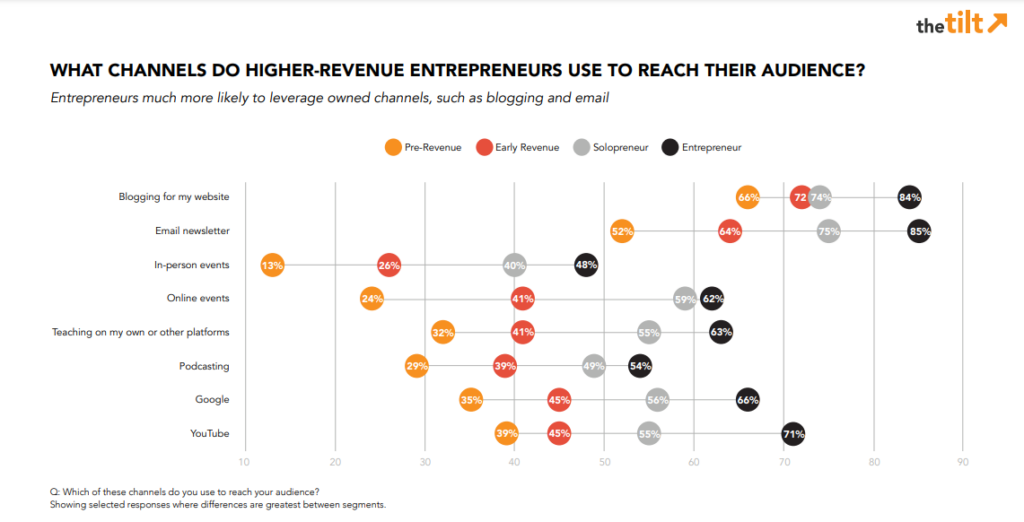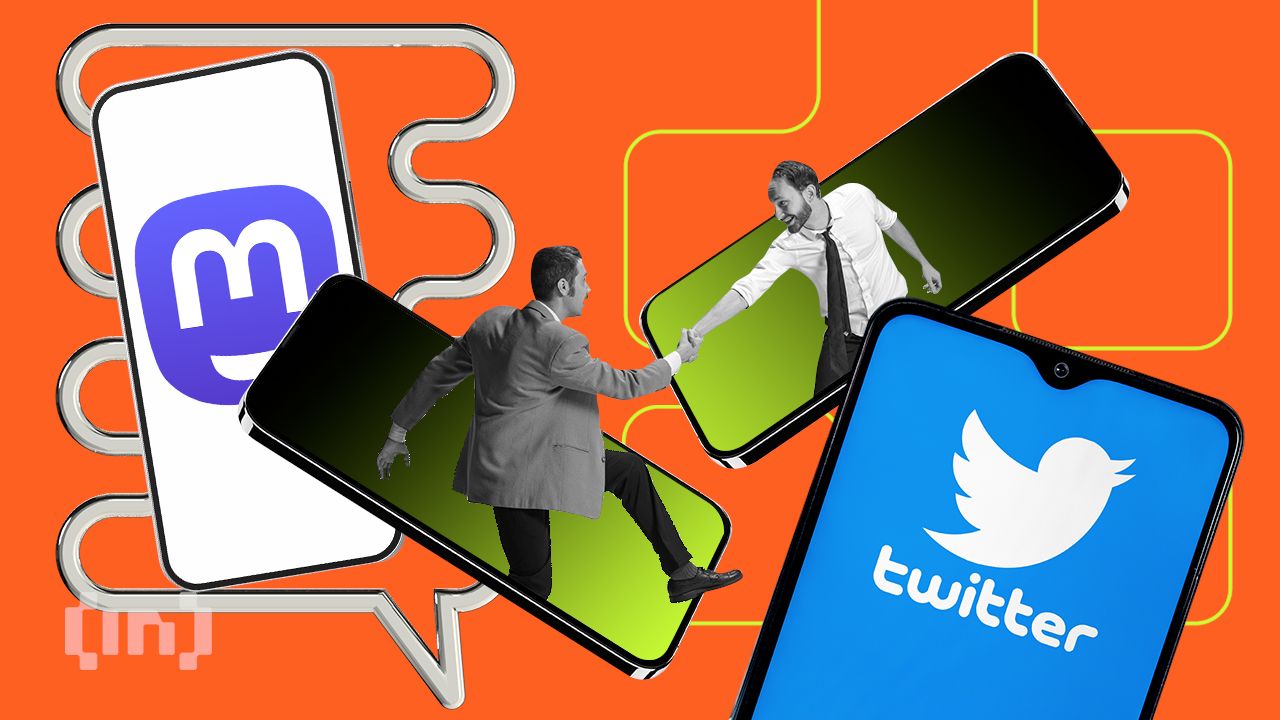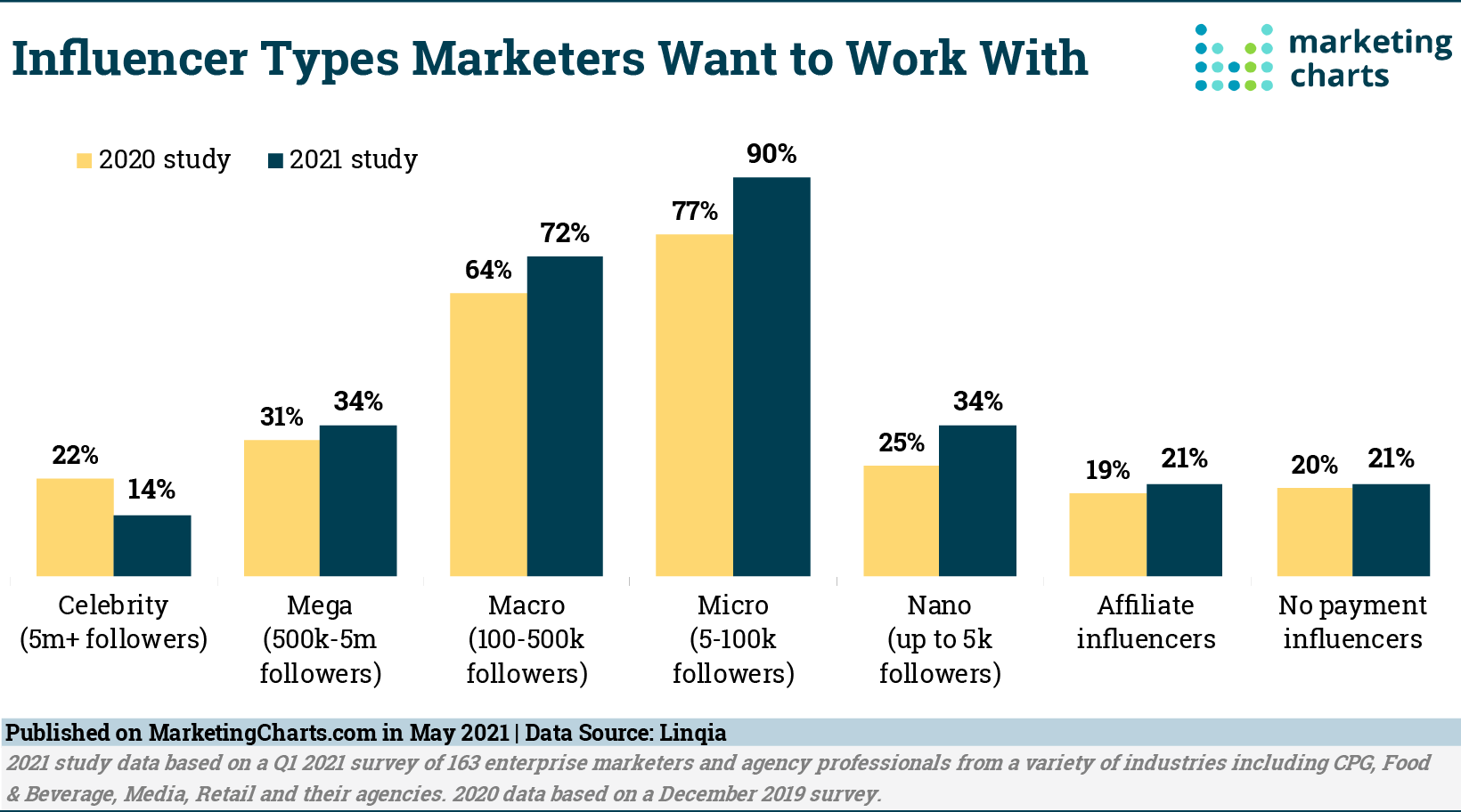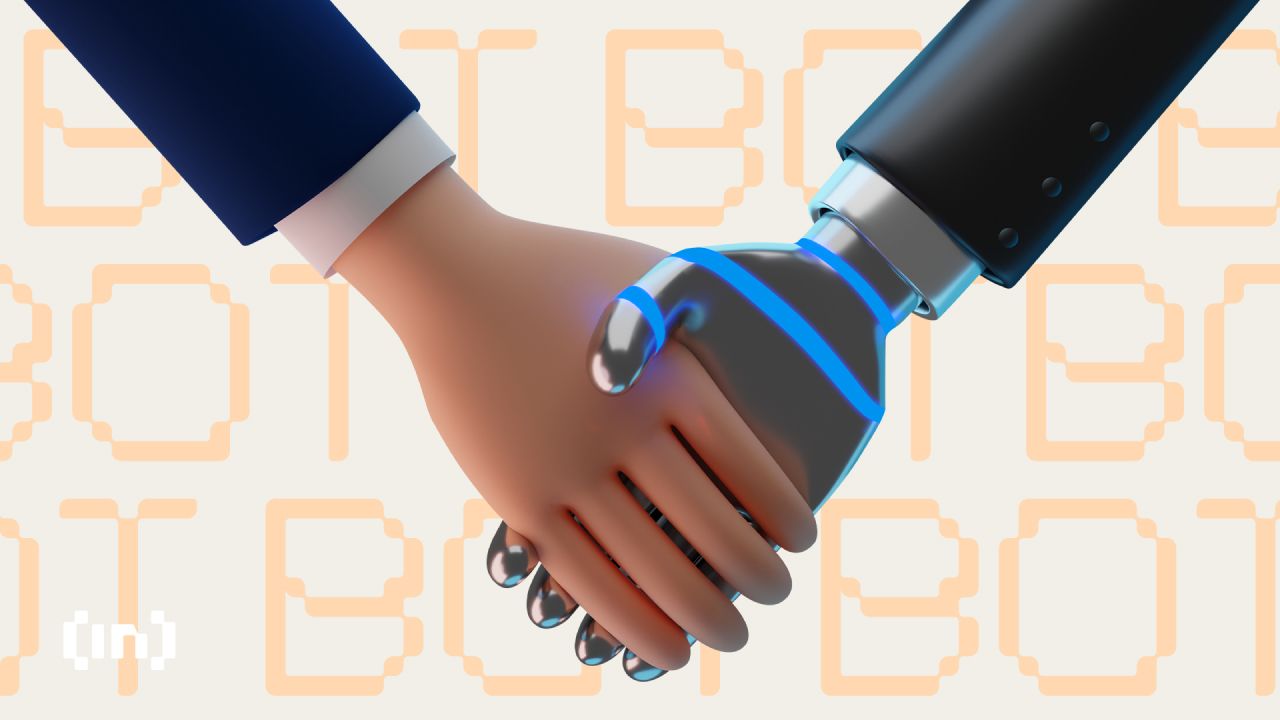Web3 newsletter marketing is a powerful tool for those looking to communicate directly with a respective audience. In today’s digital-first environment, email newsletters can form an essential part of marketing for businesses. Here’s everything you need to know about web3 marketing newsletters. Learn about growing your subscriber bases, crafting messages, leveraging social media, and monetizing your content.
- Understanding web3 marketing newsletters
- Identifying your target audience
- Crafting compelling content
- Optimizing newsletter design
- Implementing lead generation strategies
- Leveraging social media channels
- Using influencer marketing
- Building landing pages and conversion funnels
- Email marketing automation
- Analyzing and optimizing campaigns
- Retention and engagement strategies
- Monetizing your web3 newsletters
- Scaling your subscriber base
- Empowering growth and engagement in the web3 era
- Frequently asked questions
Understanding web3 marketing newsletters

A newsletter is a regular publication, generally sent through email to a group of subscribers who have chosen to receive updates from a particular organization or individual. It typically contains curated content, news, announcements, and valuable information about the sender’s industry, products, or services.
Leveraging newsletters to enhance your business is an important part of crypto marketing. Companies that fail to use them are probably not utilizing their full potential to convert or use web3 lead generation.

Newsletters tend to convert leads better than many other methods of lead conversion, including social media. This means that they are a good strategy for acquiring consistent revenue, especially during market downturns and bear markets. According to research by The Tilt, about 75% of the highest-earning entrepreneurs use email in their content distribution.
According to research by Storydoc, women and younger audiences are motivated to subscribe to newsletters by discounts and exclusive offers.
Explaining the transition from web2 to web3 in marketing
Web2 and web3 marketing are entirely different ball games. This is due to the difference in values and methods of communicating with the audiences. In any case, both require that you communicate your products and services to the audience.
Conversely, the audiences of the decentralized web are more difficult to market to. That is because those of us within the web3 tend to be more privacy-focused. Therefore, many people within web3 may be resistant to personalized ads.
Audiences in web3 also have distinct characteristics based on their motivations for entering the space. These factors can influence the appropriate approach and channels to engage with them, which may not be applicable to other audience groups.
Key characteristics and benefits of web3 marketing newsletters
Newsletters are designed to engage and inform subscribers, fostering a connection between the sender and the audience. They can include text, images, links, and calls to action, allowing recipients to interact, visit websites, or take specific actions based on the content provided.
In today’s world, businesses must leverage social interactions with their customer base. As a result, cultivating audiences on social media has become customary. However, this presents a problem. Social media is considered paid media. However, you do not own the channels of communication (i.e., your social media account) or your audience, for that matter.
Newsletter/email marketing benefits
- With web3 marketing, you can pull your audiences off proprietary platforms and take them wherever you go with newsletters.
- Compared to many other marketing channels, newsletters are relatively cost-effective. While there may be expenses associated with email marketing software or hiring content creators, the overall cost is typically lower than traditional advertising.
- Newsletters serve as a powerful traffic-driving tool. By including links to your website, blog posts, new products, or special offers (e.g., NFTs) within your newsletters, you can direct recipients to specific landing pages or encourage them to take desired actions.
- You can maintain ongoing engagement with your audience by consistently delivering valuable content through newsletters. Unlike other marketing channels where messages may be fleeting, newsletters allow you to establish a long-term relationship with subscribers, increasing the likelihood of repeat business and customer loyalty.
- Newsletters allow you to communicate directly with your target audience. By collecting subscribers’ email addresses, you have a direct line of communication to reach them with your marketing messages, updates, promotions, and other relevant information.
Identifying your target audience

Importance of defining your target audience for effective marketing
Defining your target audience is crucial for effective marketing. It helps you understand and connect with the right people who are most likely to be interested in your business. In addition, clearly identifying your target audience will allow you to tailor your marketing messages, strategies, and channels to reach and resonate with them effectively.
This focus allows you to allocate your resources efficiently, optimizing your marketing efforts and maximizing your return on investment (ROI). Understanding your audience’s demographics, interests, needs, and pain points enables you to create relevant and compelling content, build stronger relationships, and drive higher engagement and conversions.
Ultimately, defining your target audience allows you to deliver personalized experiences, establish brand loyalty, and achieve better overall marketing results.
Strategies for researching and understanding your target audience
All things considered, web3 marketing newsletters are an effective way to reach your target audience. But who is your target audience, and how do you identify them? Here are a few effective ways to identify your target audience.
- Define who isn’t your target audience
- Analyze competitors
- Identify industry trends and conduct market research.
- Build buyer personas.
- Conduct interviews and surveys of your customer base.
A fictionalized representation of a company’s ideal customer is called a buyer persona. It offers a thorough portrait of the client, including specifics on their characteristics, activities, motivations, and objectives.
Research and data about current and potential customers are used to create the persona. For instance, “John is 25 years old, he lives in New York, takes the subway, works in finance and makes $100k a year.”
The great news is that you don’t have to do all of these tasks manually. There are many tools out today that aids you in finding your target audience. Some examples are:
- Brandwatch
- Upfluence
- Sprout Social
- BuzzSumo
- Keyhole
Crafting compelling content
Importance of high-quality and relevant content for attracting subscribers
It should go without saying, but crafting attractive content plays a huge role in web3 newsletter marketing. Firstly, it establishes a strong value proposition. When you consistently create high-quality content that is relevant to your target audience, it showcases your expertise and professionalism and demonstrates that you offer valuable information or resources.
Secondly, it fosters audience engagement. When your content is of high quality and directly addresses the interests, challenges, or aspirations of your target audience, it captures their attention and encourages them to interact with your brand.
Engaging content can spark discussions, encourage social sharing, and invite feedback, creating a sense of community and connection that motivates people to subscribe for future updates.
Additionally, quality content enhances your brand’s uniqueness, visibility, and reach. When you consistently produce relevant and valuable content, it has the potential to attract organic traffic through search engines and social media.
Tips for creating engaging and valuable content in Web3 newsletters
While the digital landscape evolves over time, there are a few actionable ways to create compelling content consistently. Here are a few strategies.
- Define your newsletter’s purpose: Newsletters can have varying objectives depending on their intended purpose. While some newsletters aim to boost sales, others are designed to drive website traffic. Therefore, it is crucial to have a clear understanding of the intended purpose before drafting the newsletter.
- Leverage current events and trends: Incorporating timely and relevant content based on current events, industry trends, or seasonal themes can make your newsletter more engaging and increase its perceived value. However, be mindful of the relevancy and appropriateness of the events or trends you choose to align with your brand.
- Make content concise and succinct: Keep your content focused, concise, and easily scannable. Use clear headings, subheadings, and bullet points to break down information into digestible chunks. Busy subscribers often skim through newsletters, so presenting information in a concise and easily understandable manner increases the likelihood of engagement and encourages readers to explore further.
- Use eye-catching titles and subject lines: The subject line of your newsletter holds significant influence over whether your subscribers choose to open it or not. Regardless of the quality and value of your newsletter content, its success depends on a captivating subject line. It is important to craft a catchy subject line that is concise, attention-grabbing, and to the point.
Optimizing newsletter design

Importance of an appealing and user-friendly newsletter design
An appealing and user-friendly newsletter design is essential for several reasons. Firstly, it grabs attention and creates a positive first impression, increasing the likelihood that subscribers will engage with the content. A visually appealing design with cohesive branding elements helps establish a professional image and build trust with the audience.
Secondly, a user-friendly design enhances the overall user experience. Easy navigation, clear layout, and intuitive design elements help subscribers to find and interact with the desired information or call to action. A seamless experience then promotes higher engagement, reduces frustration, and encourages recipients to explore the newsletter further.
Lastly, an appealing and user-friendly design contributes to the overall perception of quality. A well-designed newsletter suggests that the content within is valuable and worth the readers’ time, further reinforcing brand credibility and increasing the chances of ongoing engagement and future conversions.
Best practices for designing web3 marketing newsletters
- Use whitespace: Incorporating whitespace in your newsletter design helps create visual breathing space, making it easier for readers to navigate and digest the content. Whitespace enhances readability, improves overall aesthetics, and allows important elements to stand out.
- Design for mobile: With a significant portion of email opens occurring on mobile devices, it is essential to optimize your newsletter design for mobile viewing. Ensure that your content, images, and layout are responsive and adapt well to different screen sizes.
- Use graphics: Incorporate visually appealing and relevant graphics, such as images, infographics, or charts, to enhance the visual appeal of your newsletter. Visual elements can help convey information more effectively, capture attention, and make your content more memorable. However, ensure that the graphics are optimized for fast loading times and do not overpower the written content.
- Use visual hierarchy: By using techniques such as size, color, contrast, typography, and placement, visual hierarchy helps create a clear flow and emphasis within the newsletter design. Important elements, such as headlines or call-to-action buttons, are typically made more prominent while supporting content is presented in a visually subordinate manner.
Boost your mailing list subscription with BeInCrypto – check out our offerings!
Implementing lead generation strategies

Overview of lead generation and its role in building a subscriber base
The process of identifying and cultivating potential customers (also referred to as leads) for a company’s products or services is known as lead generation. In other words, it is the process of identifying people who are interested in what a company offers and converting them into customers.
Your newsletter is a lead magnet. With this in mind, you must also acquire quality leads or leads that have a higher potential for conversion. Simply holding a long list of subscribers will not do if it does not translate into increased business or engagement.
Effective strategies for capturing leads through web3 marketing newsletters
The best option is always to employ a web3 marketing agency to foster lead generation. However, if you are low on startup capital, you might be looking to do it yourself. When it comes to capturing leads through web3 marketing newsletters, you can employ several effective strategies:
- Contests and prizes: This could involve giveaways, competitions, or exclusive offers where readers submit their details to participate. These incentives attract new leads and encourage existing subscribers to stay engaged and actively participate.
- Surveys: By including interactive survey forms or questionnaires, you can gather valuable insights about your subscribers while simultaneously capturing their contact information. Surveys can also help segment your audience based on their preferences.
- CTA (call-to-action): Including clear and compelling calls-to-action throughout your newsletter is crucial for lead generation. Whether it’s directing readers to visit your website, sign up for a service, or download a resource — strategically placed CTAs encourage readers to take the desired action.
- A/B testing and optimization: A/B testing involves experimenting with different variations of your newsletter to identify the most effective elements for lead capture. By testing different subject lines, layouts, visuals, or CTAs, you can analyze and optimize the performance of your newsletter.
- Personalization: Tailoring your newsletters to individual subscribers based on their interests, preferences, or previous interactions can significantly boost lead generation. Use data you’ve collected to personalize content, recommendations, and offers.
Leveraging social media channels

Utilizing social media platforms to promote your web3 marketing newsletters
Social media is arguably the greatest funnel of our modern time. It is cost-effective and has great returns. Connecting with new audiences and increasing newsletter subscribers is now simpler than it ever was.
The statistics don’t lie: over half of the world uses social media. Moreover, the average American has 8.4 social media accounts on average. Basically, it is a honeypot for funneling leads. If you aren’t on social media, you are missing a golden opportunity to scale your business.
Tips for engaging with your audience and driving traffic to your newsletters
- Engage with the audience through AMAs, lives, Twitter Spaces, etc.
- Use polls and questions to foster engagement.
- Employ crypto link building for newsletters, landing pages, and other forms of owned media.
- Create posts of value, then create CTA to subscribe for similar walled or free content.
- Utilize social media ads.
- Offer prizes, contests, or giveaways in exchange for an email.
Using influencer marketing

Exploring the power of influencer marketing in web3 newsletters
Influencer marketing is another increasingly popular way of converting leads. Interestingly, influencers tend to convert more than celebrity endorsements. There could be many reasons for this, including the fact that influencers tend to have more targeted audiences.
According to research published by Influencer Marketing Hub, Many businesses plan to increase marketing spend on influencers sometime in the future. This goes suggest that influencer marketing will only increase in the near future.
Strategies for collaborating with influencers to increase subscribers and leads
- Identify the right influencers.
- Create personalized offers that add value to all parties involved.
- Build genuine relationships.
- Collaborate.
- Utilize guest posting.
- Layout responsibilities and obligations in a legal agreement.
Building landing pages and conversion funnels
A landing page is a standalone web page that a user “lands” on after clicking an email, advertisement, or other digital location in online marketing. It is also referred to as a “lead capture page.”
Creating dedicated landing pages to convert visitors into subscribers
The primary purpose of a landing page is to convert visitors into leads or customers. It achieves this by presenting targeted content and a compelling call-to-action (CTA) that prompts visitors to take a desired action, such as making a purchase, signing up for a newsletter, downloading a resource, or filling out a form.
Detailed information, benefits, and incentives to encourage visitors to make a purchase. Landing pages are also employed to facilitate event registrations, such as conferences, webinars, workshops, or product launches. They provide event details and registration forms to gather attendee information.
Implementing effective conversion funnels to nurture leads
Landing pages typically have minimal distractions and focus on delivering a clear and concise message related to the campaign or objective. They are tailored to a particular audience or campaign, ensuring that the content and design align with the visitors’ expectations and needs. A good example of a popular landing page platform is Linktree.
A well-defined and prominent call-to-action guides visitors toward the desired action, making it easy for them to understand what to do next. Landing pages often integrate with analytics tools to track conversions, measure campaign effectiveness, and gather data on visitor behavior.
Email marketing automation

Another method, email marketing, has amazing profitability. According to Statista, it is projected to reach $17.9 billion in revenue by the year 2027.
Benefits of email marketing automation in web3 newsletters
Email automation allows you to personalize your newsletters based on user preferences, behaviors, and interactions. By leveraging data and integrating it with your email marketing platform, you can deliver highly tailored content to subscribers. This personalization improves engagement and builds stronger connections with your audience.
Automating email campaigns eliminates the need for manual, repetitive tasks. Once you set up the automation workflow, emails can be sent automatically based on predefined triggers, such as user actions, specific dates, or behavioral patterns. This saves time and allows you to focus on other important aspects of your web3 newsletter marketing.
Furthermore, data can be utilized to segment your email list based on various criteria like user preferences, token holdings, transaction history, or engagement levels. By segmenting your audience, you can send targeted emails to specific groups, ensuring that your content resonates with their interests. This improves the relevance of your newsletters and increases the likelihood of conversion.
Some products you can use for email automation and newsletters include:
- Mailchimp
- Substack
- Omnisend
- Campaign Monitor
- Litmus
- Brevo
Tools and techniques for automating your marketing efforts
- Craft a suitable email signature that includes your name, job title, logo, compelling call to action, and relevant links.
- Utilize merged mailing to personalize emails and address recipients by their names or specific attributes.
- Ensure emails are sent from real individuals rather than automated bots to establish a more personal and trustworthy connection.
- Implement follow-up emails to maintain engagement and nurture relationships with recipients.
- Track and analyze the outcomes of your email campaigns to gather valuable insights and measure their effectiveness.
- Develop reusable email templates to save time and consistently present your brand’s message and aesthetics.
- Optimize your email scheduling to send messages at the most opportune times for higher open and response rates.
Analyzing and optimizing campaigns

Importance of tracking and analyzing campaign performance
Tracking your web3 marketing newsletter campaign allows you to determine how well your newsletter campaigns are performing. By analyzing metrics, you can assess the impact of your efforts and make data-driven decisions to optimize future campaigns.
Monitoring metrics helps you understand how engaged your audience is with your newsletters. By tracking open rates, click-through rates, and conversion rates, you can gauge the level of interest and interaction, allowing you to refine your content and improve engagement.
Key metrics to monitor and optimize your Web3 marketing newsletters
- Open Rate: The percentage of subscribers who open your newsletter. It indicates the effectiveness of your subject lines and helps assess the initial engagement.
- Click-Through Rate (CTR): The percentage of subscribers who click on links within your newsletter. It measures the level of engagement and indicates the relevance of your content and CTAs.
- Conversion Rate: The percentage of subscribers who complete a desired action, such as making a purchase or signing up for a service. It reflects the effectiveness of your newsletters in driving conversions.
- Unsubscribe Rate: The percentage of subscribers who opt out of your newsletter. Monitoring this rate helps you assess the quality and relevance of your content, allowing you to make adjustments to retain subscribers.
- Bounce Rate: The percentage of emails that are not delivered successfully. It helps you monitor the health of your email list and maintain a clean subscriber database.
- Time Spent on Page: The average amount of time subscribers spend reading your newsletter content. It provides insights into the engagement levels and the effectiveness of your messaging.
By tracking these metrics and analyzing the results, you can gain valuable insights into your web3 marketing newsletters’ performance, optimize your strategies, and improve the overall effectiveness of your campaigns.
Retention and engagement strategies
Retention refers to the ability of a business or organization to retain or keep existing customers, subscribers, or users over a specific period of time. It is a measure of customer loyalty and satisfaction, indicating the success of an organization in maintaining its customer base.
Retention is typically measured as a percentage and can be calculated by dividing the number of customers or subscribers at the end of a given period by the number of customers or subscribers at the beginning of that period. The resulting value indicates the proportion of customers or subscribers that have been retained over time.
Retaining and engaging subscribers for long-term success
Retention is a critical metric for businesses as it directly impacts long-term profitability and success. Retaining existing customers is generally more cost-effective than acquiring new ones, as it reduces customer acquisition costs and allows businesses to maximize the lifetime value of their customers.
High retention rates indicate that customers or subscribers are satisfied with the product, service, or content being provided and are more likely to continue their relationship with the organization. It also suggests that the organization has been successful in building strong relationships, delivering value, and meeting customer expectations.
Techniques for building relationships and fostering loyalty
- Maintain a consistent schedule for your newsletter delivery, whether it’s weekly, bi-weekly, or monthly. Subscribers appreciate reliability and knowing when to expect your content. However, be mindful of not overwhelming them with too many emails.
- Consistently deliver high-quality, relevant, and valuable content that aligns with your subscribers’ interests and needs. Offer unique insights, actionable tips, educational resources, or exclusive access to information that they find valuable.
- Segment your subscriber list based on their preferences, behaviors, or demographics. This allows you to send more targeted and personalized content that resonates with each segment.
- Occasionally surprise your subscribers with unexpected bonuses, exclusive content, or small gifts as a token of appreciation. These unexpected gestures go a long way in fostering loyalty and creating a positive association with your brand.
- Actively listen to feedback from your subscribers and use it to improve your newsletter. Pay attention to what they enjoy, what they would like to see more of or any concerns they may have.
Monetizing your web3 newsletters

Strategies for generating revenue without compromising value
Partner with relevant companies or products that align with your audience’s interests. Promote these products or services through your newsletter and earn a commission for each referral or sale generated. Be transparent with your audience about your affiliate partnerships to maintain trust and ensure the products or services you promote genuinely provide value.
You can also collaborate with sponsors or advertisers whose offerings resonate with your audience. Select sponsors that align with your values and provide valuable products or services. Integrate sponsored content or advertisements within your newsletters in a natural and non-intrusive way. Clearly disclose sponsored content to maintain trust with your subscribers.
Don’t forget to sell your own products or services that align with your expertise and cater to your audience’s needs. This can include digital products like e-books, courses, premium content, or physical products related to your niche. Ensure your offerings provide genuine value and align with the quality your subscribers expect from you.
Introduce premium or exclusive subscription tiers that provide additional value to your subscribers. Offer extra content, early access to newsletters or special features, exclusive discounts, or personalized experiences to those who opt for a premium subscription. This allows you to monetize a portion of your audience while still providing free access to valuable content for others.
Scaling your subscriber base
Scaling refers to the process of growing or expanding a business, organization, or operation. Crucially, this is done in a way that allows it to handle increased demand, reach a larger audience, and achieve greater efficiency and profitability.
It is the strategic allocation of resources, implementation of systems and processes, and adaptation of a business model to accommodate growth. Successful scaling occurs without sacrificing quality or incurring significant additional costs.
Techniques for scaling your subscriber base effectively
Create high-quality, valuable, and relevant content that resonates with your target audience. Offer unique insights, expert knowledge, actionable tips, or exclusive information that differentiates your newsletter from others. Clearly communicate the value proposition of subscribing to your newsletter to attract new subscribers and retain existing ones.
Implement a referral program that incentivizes your existing subscribers to refer their friends, colleagues, or contacts to join your newsletter. Offer rewards, exclusive content, or discounts to both the referrer and the referred subscriber.
Continuously analyze the performance of your newsletter campaigns and subscriber growth strategies. Monitor metrics such as conversion rates, open rates, and unsubscribe rates to identify areas for improvement.
Strategies for continuous growth and expansion
- Streamline the subscription process to make it quick, easy, and frictionless for potential subscribers. Place prominent and visually appealing sign-up forms on your website, landing pages, and social media profiles.
- Utilize compelling call-to-action (CTA) buttons, banners, or pop-ups to encourage visitors to subscribe to your newsletter. Place these CTAs strategically on your website, blog posts, and other relevant content to capture the attention of your audience at the right moments.
- Offer a valuable incentive or lead magnet to entice visitors to subscribe to your newsletter. This can be in the form of exclusive content, downloadable resources, discounts, or access to a members-only area.
- Leverage social media platforms to promote your newsletter and engage with your target audience. Share snippets of your newsletter content, highlight subscriber benefits, and encourage followers to subscribe.
Empowering growth and engagement in the web3 era
The web3 era presents immense opportunities for marketers to scale their businesses, engage with their audiences, and drive sustainable growth. By implementing the techniques and strategies discussed in this guide, you can effectively build relationships, foster loyalty, and expand your subscriber base while maintaining the value and quality that your audience expects.
Boost your mailing list subscription with BeInCrypto – check out our offerings!

